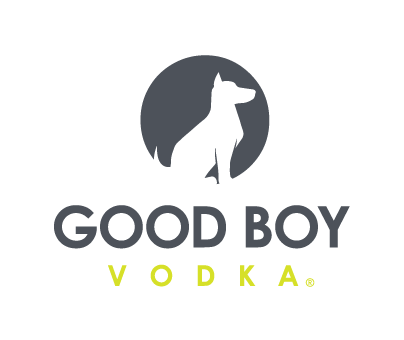Data Digest: Consumer Behavior Moves into New Phase

As the world prepares to enter the third month of the COVID-19 pandemic, the CPG industry is still working to adapt to a radically altered marketplace. Last week, three new reports from market research firms IRI, Datassential and Blue Chip, shone light on how consumer behavior has changed since March and what the industry should anticipate as the crisis eases and a new normal for consumer buying habits emerges.
According to the reports, more than six weeks into pandemic consumers have adopted new, purpose-driven shopping habits in grocery that pose challenges for emerging brands and categories. As well, demand has begun to come down but basket sizes continue to grow, ecommerce usage has increased and is poised to continue growing in the post-COVID environment, and the future of restaurants remains uncertain as many Americans grow accustomed to eating at home and more fearful of closed public spaces.
Stockpiling Slows, But Basket Size Increases
Last month, grocery stores and food and beverage brands experienced a surge in demand as consumers, recently informed of social distancing measures, raced to stores and stockpiled supplies. According to a report by IRI, dollar sales in major CPG categories are still up nearly 100% year-over-year as the large baskets remain the norm, but the initial mid-March spike may be starting to come down as consumers work through their backstock and reduce the number of shopping trips.
The height of COVID-inspired panic buying came during the two week period between March 9 and March 22, according to IRI. The demand index for beverage was at 141 versus a year ago and general food products reached an index of 173 for the week ending March 15. Peaks for frozen food (193), refrigerated food (162) and beverage alcohol (140) came the next week on March 22. However, over the past month sales have started to slow, though some categories still show significant year-over-year growth: As of April 19, the demand index for beverage was down to 97, while frozen food was up at 128, general food at 102, alcohol at 117 and refrigerated food at 114.
The novel coronavirus also resulted in significant shifts in holiday shopping activities, with seasonal candy dollar sales down 17% year-over-year for the week of Easter, while fresh meat grew 25% and smoked ham grew 85%.
But as consumers seek to minimize their potential exposure to the virus, they have reduced their number of regular shopping trips but increased their basket size. The basket size index for beverages reached a high of 112 for the week ending April 12 (up from 100 on March 1), compared to a year ago, while general food saw an index of 125 (up from 101 on March 1).
Among those contributing most to the growth are families with children, who accounted for 36% of total sales in April to date (versus 34.5% in 2019) and account for 40.7% of industry growth.
Ecommerce on Rise, In-Store Experience Shifts
In a survey of 500 consumers conducted between April 4-5 by Chicago-based marketing agency Blue Chip, 90% of consumers said they still prefer to shop for groceries in physical stores; however, that experience is evolving. Seeking to minimize exposure, consumers are attempting to get in and out of the store as quickly as possible. They are coming with strict shopping lists and spending less time browsing, with a dwindling sense of brand loyalty as finding a necessary kitchen staple becomes more important than finding the right version of it.
Social distancing measures have also altered the in-store shopping experience, undoing almost overnight the momentum behind enhanced on-site options as bakeries, delis, hot bars and sampling stations close down. As well, emerging brands will have to work to reintroduce discovery to the shopping experience as the virus “retrains” consumers to value necessities and familiar favorites over innovative products.
“As the crisis subsides, we may see the emergence of a Brave New Shopper in the U.S.,” the report states. “One with new adaptability, a sharpened set of shopping skills and higher expectations for their shopping experience. To incite discovery and rebuild loyalty in-store, brands will need to reteach shoppers how to navigate categories and find ways to encourage them to shop the aisles.”
Though in-person shopping remains the norm, ecommerce channels are likely to see continued growth even after the pandemic subsides. Blue Chip reported a 32% increase in ecommerce purchases, with 89% of ecommerce shoppers saying they hope to decrease the risk of exposure by not entering the store and 84% of respondents said shopping online reduces stress (up 20 points). Of those who have not bought groceries online, 50% said they plan to or would be willing to do so in the future.
However, only 40% said they were satisfied with their online shopping experience, citing marked up prices, out-of-stocks and long delivery times as issues, according to Blue Chip. Some reported a lack of “visceral reward” they receive from shopping in person, noting that they don’t trust that the employee selecting their groceries will always get the best deals or select the right products. Data from IRI also reflected some of that dissatisfaction, as 27% of home delivery shoppers and 15% of curbside pickup shoppers said the prices were higher than they would normally be willing to pay.
IRI also reported a 13% increase in home delivery orders and a 14% increase in curbside pickup orders. Curbside pickup in particular has shown some momentum towards broader adoption, with 40% of those currently using the service said they will continue to use it after the pandemic passes. Roughly one-third of home delivery shoppers said they will continue to use the service for at least 50% of their grocery shopping going forward.
Nerves Around Restaurants May Persist
A report from Datassential, which polled 1,000 Americans between April 17-20, looked at consumers’ willingness to eat out at restaurants as some states begin to loosen social distancing restrictions and allow businesses to reopen.
According to the report, the recent pushes by the White House and some governors to reopen businesses sooner, rather than later, is not overwhelmingly popular: 44% of respondents felt that opening by May 1 is “much too soon,” while 28% said it was “slightly too soon.” Health concerns still weigh heavy on the majority of consumers, as 61% of Americans said they were “very concerned” about the virus as of April 17, down from a peak of 67% on April 1 but relatively consistent with most polls since mid-March. Only 6% of Americans said they were not concerned at all and 33% were “somewhat concerned.”
IRI also reported that though fears of coronavirus are high, concern around the virus has started to stabilize. In a poll conducted between April 17-19, 60% of survey respondents said they were extremely concerned about the virus, but only 25% were more concerned about the virus than the week prior. Comparatively, only 38% were extremely concerned in a poll conducted March 13-15, and 54% were more concerned then than they were the week before.
As long as the fear persists, however, consumers are more likely to continue preparing meals at home. Datassential reported that 61% of Americans said they are avoiding eating out during the pandemic, while 24% said they are nervous but will still eat out and 15% have no concerns. When restaurants reopen, only 20% of respondents said they would “absolutely” dine-in right away, while 39% said they “might consider” it.
While many consumers said they may feel more comfortable going out to eat again if certain protective measures are taken by restaurants (such as decreased capacity or intensive cleaning initiatives), eating at home was not a primary concern for most Americans. Only 19% said cooking at home was frustrating, though more consumers were aggravated by out-of-stock issues in grocery (45%) and long lines in stores (31%).

















